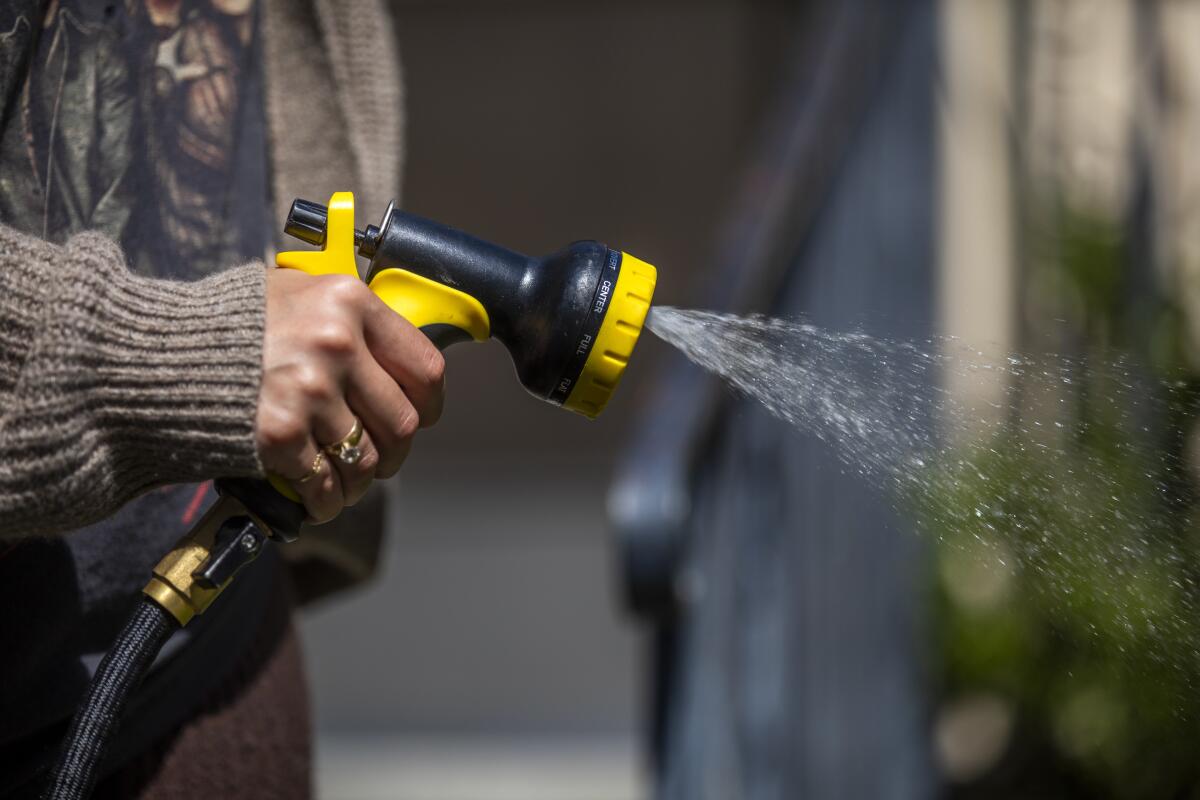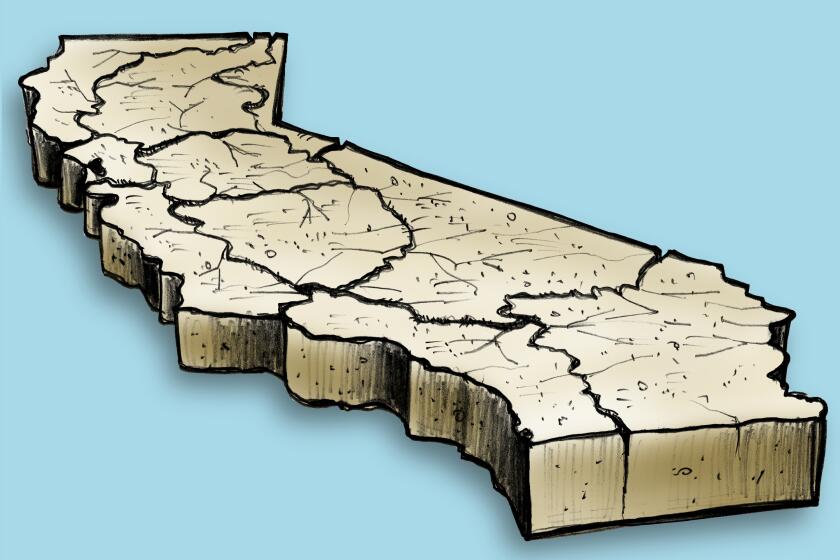Northern California tops Southland in water conservation as savings improve statewide

- Share via
New data suggest Californians are steadily reducing water usage in the face of severe drought, although cities and towns in the northern part of the state are cutting back more than those in the thirsty and more heavily populated south.
Water use in cities and towns across the state decreased 7.6% in June when compared with the same month in 2020 — significantly short of Gov. Gavin Newsom’s voluntary 15% goal last year, but a significant shift compared with the previous month, according to data released by the State Water Resources Control Board. In May, statewide savings were just 3.1%.
Water officials called the reductions “encouraging,” especially since the savings were achieved in the middle of the summer.
“We’re all pulling in the same direction, in essence, and that helps,” said Brad Coffey, water resource manager for the Metropolitan Water District of Southern California. “We’re encouraged by the direction that things are going but we think that more can be done.”
The June numbers are the first sign of how state conservation efforts are progressing since the Metropolitan Water District of Southern California declared a water shortage emergency in April and imposed historic watering restrictions the following month.
Residents of the South Coast Hydrologic Region cut water use by 5.9% compared with the same month in 2020 — more than double the region’s May savings of 2.2%. The region includes Los Angeles and San Diego and comprises more than half of the state’s population.
Although South Coast conservation numbers were well below Newsom’s goal, Coffey said the difference when compared with 2020 were significant because 2020 water use followed a particularly wet season, meaning water usage may not have been as high as other periods.
Reaching 15% conservation for the region may be a particularly tall order, Coffey said, referring to it as a “stretch goal.” Water use per capita in Southern California is already about 40% lower than it was in the 1990s, he said.
“You can imagine that much of the low-hanging fruit has already been” done, he said. “It gets more difficult to reduce the more efficient you are already.”
Still, he said June’s conservation numbers showed the right momentum, and said the agency could eventually reach the governor’s goal.
The latest maps and charts on the California drought, including water usage, conservation and reservoir levels.
“We’re building momentum,” he said. “We think it is achievable, but it will take all of us pulling in the same direction.”
The hydrologic region that saved the most water in the state was the San Francisco Bay Area, which cut urban water use by 12.6% in June. The Bay Area was followed by the North Coast Hydrologic Region, which cut usage by 10.3%
Fueled by climate change and high temperatures, the drought has placed most of the state’s reservoirs below historical averages.
On June 1, the Metropolitan Water District imposed outdoor watering restrictions for areas of Los Angeles, Ventura and San Bernardino counties that are dependent on supplies from the State Water Project — a network of reservoirs and canals that channel water from Northern California to the south.
The agency had never before ordered such widespread restrictions, and officials warned that more restrictions could be imposed if residents did not significantly cut use.
The measures, MWD officials have said, are tough but necessary to ensure the health and safety of Californians.
Lake Shasta is currently at 1.7 million-acre-feet, or about 54% of its historical average storage. Lake Oroville is at only 62% of its historical average with 1.5 million-acre-feet.








